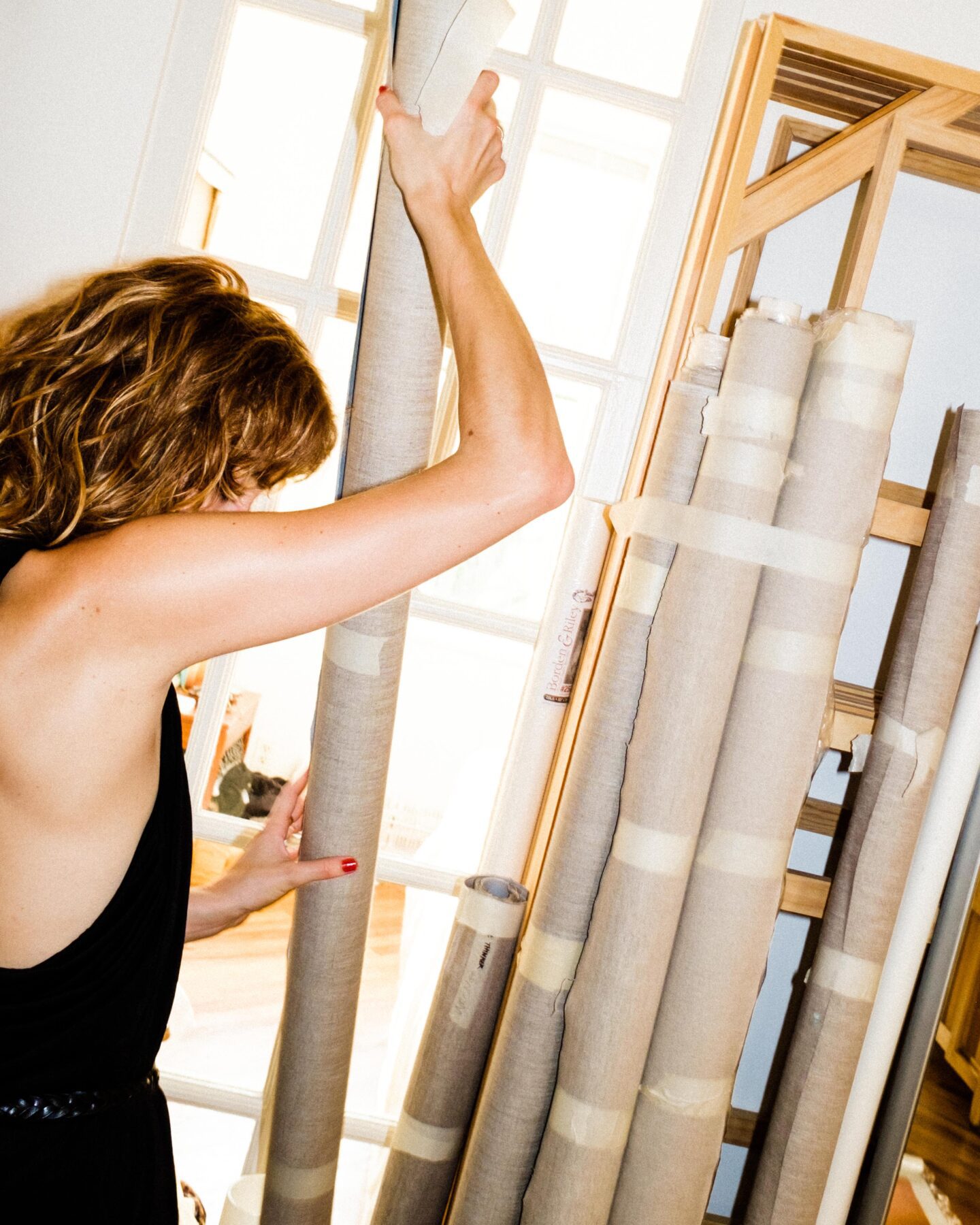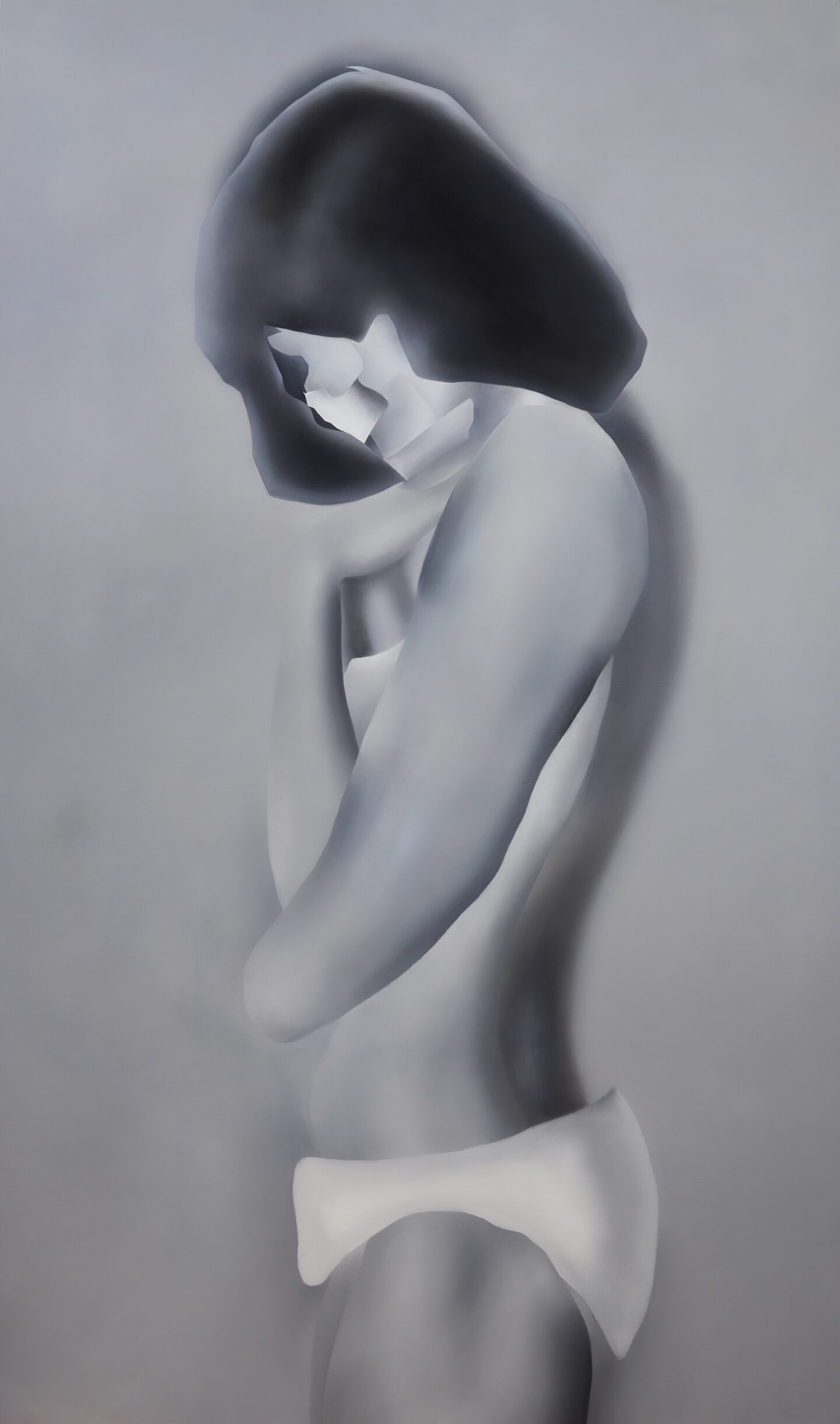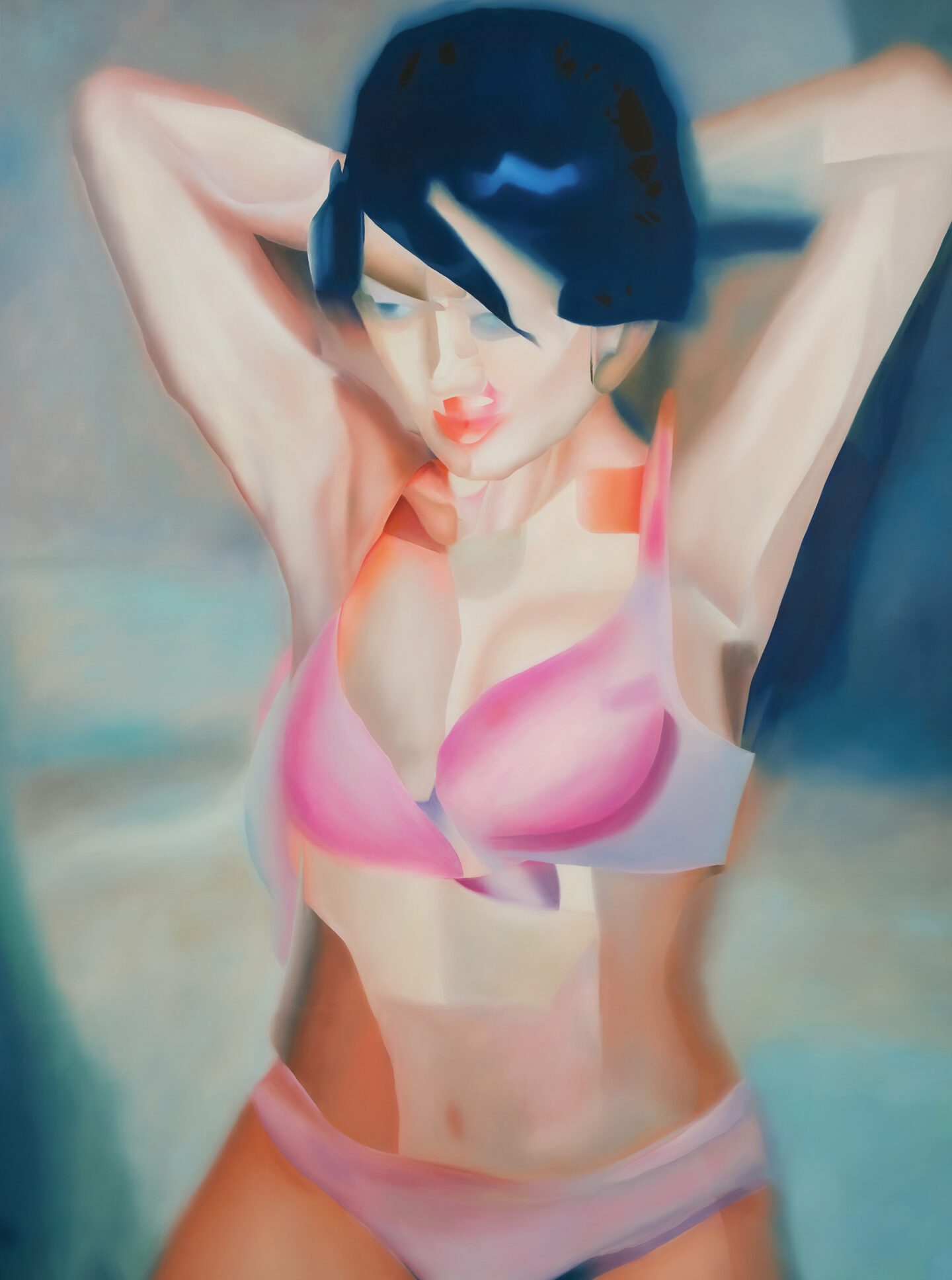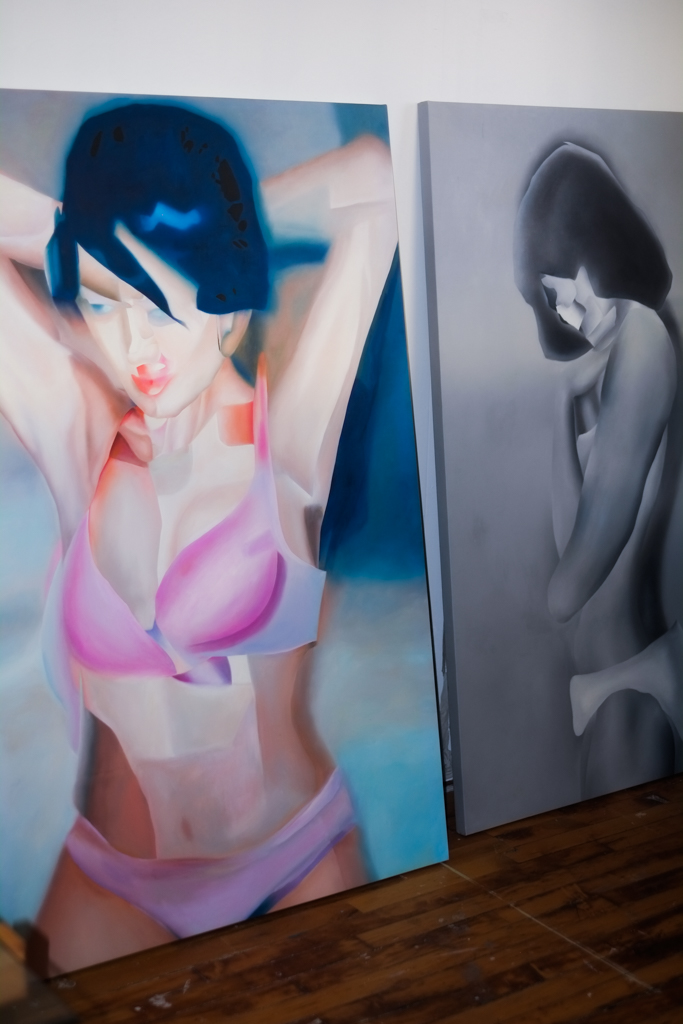Angela Santana and the Female Gaze

Angela Santana talks to us about reimagining the female body in history and its lasting influence into the digital age.
Angela Santana is an artist to watch. Having recently finished a group show in Germany, and now simultaneously in two exhibitions in New York, Santana’s work can also be seen in London at Beers Gallery for a show called: “Wonder Women.” In November, her work will also be on show at Miami’s Art Basel and in February, in Mexico City, and in 2022, the artist will have a solo exhibition in Mayfair, London, and another solo show in Greece.
The Zurich-born artist explores the fast-paced consumption of mass illicit images online and how it mirrors its vast demand in society today, questioning the ethics of how this phenomenon that has helped shape and distort the perception of women in our collective consciousness, and applying these images in her work by embracing the internet as her modern day muse.
Santana composes each artwork digitally in hundreds of layers, radically deconstructing and reinterpreting it, allowing the digital anomalies and flaws to drench into her work – before bringing it onto large scale canvases in oil. These demanding larger than life figures and close-up portraits dominate the space in scale. An antagony to the fleeting digital thumbnail, the artist’s oil paintings capture the strong contrast of the sharp digital process and rigid brushstroke that combine with the organic shapes of the female body, resulting in an empowering reinterpretation.

What is the inspiration behind your paintings?
I am exploring and critically observing the implications connected to the historical representation of the female body and its lasting influence into the digital age.
Have you always started with large scale or did you gradually work up to it?
I always knew that the large scale is a part of the concept of this series. It’s antagonist to the mass of small thumbnail sizes we’re encountering the flood images online nowadays. And hence, gives the new image and narrative importance, urgency and meaning.
I embrace the experience of diving into color when looking at my paintings in real life. Anatomy is so much more abstract when blowing up and playing with scale, and you can almost admire it in a meditative way, lingering on color that blurs into the softest gradients. It’s interesting that we as humans can’t escape but subconsciously measure based on our own scale. Some works even are pushing me to my own physical limits.

Tell us about your artistic process.
My work is sparked by the mass of objectified imagery online. The first and most time consuming part of my process is digitally painting in hundreds of layers. I keep shifting and turning these painted parts until something new and interesting emerges, before painting this composition in oil on canvas. I believe that sense of movement is captured somehow and makes its way into the finished oil painting: Everything is in motion and floating, everything is possible.
There are parallels to the Dadaist writers and their Découpé technique, an aleatory literary approach in which a written text is cut up and rearranged to create a new text and meaning.
Gysin and Burroughs also applied this technique to printed media in an effort to decode the material’s implicit content, discovering the true meaning. I cite: “When you cut into the present, the future leaks out.”
I use this approach to expand possibilities and juxtapositions and collaborate in a synergy with the computer and chance as if it would be my orchestra.

You talk about body image of women and today’s definition of beauty. How do your paintings represent this?
I always painted women and the female body, but this approach allows me to come up with something new and question the status quo.
Because how a women has to look like had been defined and manifested in the history of images – the advertising, beauty and erotic industry to name just a few. Painting in my technique allows me to challenge that image and question its roots removed from pre existing ideals or biases.
Are the women you paint people you know or are they imaginary?
They are imaginary, summing up the wide spectrum the female body can span. Sometimes I get asked why I don’t paint myself. I firmly believe my paintings don’t have to be autobiographical to be very personal, even intimate. To me, it’s got much more to do with empathy, and the female body as a symbol, both historically, politically and socially. I am many women in one body, a myriad of women.

What is your personal experience with the online consumption of images and how it affects beauty standards of women?
For me, my experience of images in a digital or even printed form, is that there is almost always something being sold in the context of an “ideal” beauty standard. It is the getting beneath the surface of the image itself, its dark underbelly, where I really begin to question its role in how we see ourselves. I look beyond and try to decipher the socio-psychological contexts embedded within. In this way I am able to recreate by destroying the original context of an image and creating a new one. Redefining the alluring colors the original image used to sell its deceit, but now changed, blurred, and weighted in oil on canvas. My paintings reflecting an entirely new narrative.
As an artist I observe this phenomenon, this consumption of images, from a more meta perspective and comment on it in my own language of painting. I believe we are “whole” exactly as we are. I am opposed to the capitalist concept that money can buy everything: That we just need what the images are trying to sell us, to be fulfilled.

I am many women in one body – a myriad of women.
Talk about each piece currently at the Salon: Riposte, Thinker, Swoon, and Myriad Mother. What do they represent?
I like to give a broader realm of my context, inspiration and intention to my audience, and the title of each work hints in that direction. Generally, I always want my painting to radiate a certain energy, confidence and empowerment. I also think words can’t capture the emotion or a sensibility the same way a brushstroke can.
What absolutely fascinates me is hearing people’s personal interpretation, I love it! It’s almost like a Rohrschach test – there really is no right or wrong. Therefore I would never define what to see, and there are multiple ways of seeing.
Who are some female painters that inspire you?
I’m inspired by so many female painters, and they all resonate with me for different reasons since a long time. Cecily Brown, Georgia O’Keefe, Louise Bourgteois, Vigée Le Brun, Marlene Dumas, Miriam Cahn, Tschabalala Self, Rachel Rossin – the list goes on.

tWhat its some advice you can give to other artists?
Create the work that you want to create – the work that you believe in and feel an absolute urge to pursue and see come to life. It’s fascinating to me that this same compulsion, that exact same spark of energy allows us to come up with so many different solutions. We should never take for granted what we create, it’s unique to each artist, each period, each day – even each brushstroke.
If you could own any artwork in the world what would it be?
Lee Krasner’s “Combat”, Cecily Brown’s “Where, When, How Often and with Whom?” or anything by Camille Claudel.
What is the most favorite work you’ve created?
That’s so hard to say, I don’t have favorites – I guess it’s a little similar that you couldn’t pick a favorite child, too. But I do have works that mean a certain breakthrough for me and my practice, or mark an important moment in my work. For example, “Delta of Venus” that can be seen in London soon, somehow bridges moments of abstraction and figuration in such an interesting balance – something I strive for in my work.


